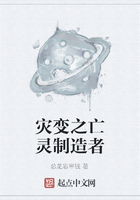RONDELET, THE HUGUENOT NATURALIST
"Apollo, god of medicine, exiled from the rest of the earth, was straying once across the Narbonnaise in Gaul, seeking to fix his abode there. Driven from Asia, from Africa, and from the rest of Europe, he wandered through all the towns of the province in search of a place propitious for him and for his disciples. At last he perceived a new city, constructed from the ruins of Maguelonne, of Lattes, and of Substantion. He contemplated long its site, its aspect, its neighbourhood, and resolved to establish on this hill of Montpellier a temple for himself and his priests. All smiled on his desires. By the genius of the soil, by the character of the inhabitants, no town is more fit for the culture of letters, and above all of medicine. What site is more delicious and more lovely?
A heaven pure and smiling; a city built with magnificence; men born for all the labours of the intellect. All around vast horizons and enchanting sites--meadows, vines, olives, green champaigns;mountains and hills, rivers, brooks, lagoons, and the sea.
Everywhere a luxuriant vegetation--everywhere the richest production of the land and the water. Hail to thee sweet and dear city! Hail, happy abode of Apollo, who spreadest afar the light of the glory of thy name!""This fine tirade," says Dr. Maurice Raynaud--from whose charming book on the "Doctors of the Time of Moliere" I quote--"is not, as one might think, the translation of a piece of poetry. It is simply part of a public oration by Francois Fanchon, one of the most illustrious chancellors of the faculty of medicine of Montpellier in the seventeenth century." "From time immemorial," he says, "'the faculty' of Montpellier had made itself remarkable by a singular mixture of the sacred and the profane. The theses which were sustained there began by an invocation to God, the Blessed Virgin, and St. Luke, and ended by these words: 'This thesis will be sustained in the sacred Temple of Apollo.'"But however extravagant Chancellor Fanchon's praises of his native city may seem, they are really not exaggerated. The Narbonnaise, or Languedoc, is perhaps the most charming district of charming France.
In the far north-east gleam the white Alps; in the far south-west the white Pyrenees; and from the purple glens and yellow downs of the Cevennes on the north-west, the Herault slopes gently down towards the "Etangs," or great salt-water lagoons, and the vast alluvial flats of the Camargue, the field of Caius Marius, where still run herds of half-wild horses, descended from some ancient Roman stock; while beyond all glitters the blue Mediterranean. The great almond orchards, each one sheet of rose-colour in spring; the mulberry orchards, the oliveyards, the vineyards, cover every foot of available upland soil: save where the rugged and arid downs are sweet with a thousand odoriferous plants, from which the bees extract the famous white honey of Narbonne. The native flowers and shrubs, of a beauty and richness rather Eastern than European, have made the "Flora Montpeliensis," and with it the names of Rondelet and his disciples, famous among botanists; and the strange fish and shells upon its shores afforded Rondelet materials for his immortal work upon the "Animals of the Sea." The innumerable wild fowl of the Benches du Rhone; the innumerable songsters and other birds of passage, many of them unknown in these islands, and even in the north of France itself, which haunt every copse of willow and aspen along the brook-sides; the gaudy and curious insects which thrive beneath that clear, fierce, and yet bracing sunlight; all these have made the district of Montpellier a home prepared by Nature for those who study and revere her.
Neither was Chancellor Fanchon misled by patriotism, when he said the pleasant people who inhabit that district are fit for all the labours of the intellect. They are a very mixed race, and, like most mixed races, quick-witted, and handsome also. There is probably much Roman blood among them, especially in the towns; for Languedoc, or Gallia Narbonnensis, as it was called of old, was said to be more Roman than Rome itself. The Roman remains are more perfect and more interesting--so the late Dr. Whewell used to say--than any to be seen now in Italy; and the old capital, Narbonne itself, was a complete museum of Roman antiquities ere Francis I.
destroyed it, in order to fortify the city upon a modern system against the invading armies of Charles V. There must be much Visigothic blood likewise in Languedoc: for the Visigothic Kings held their courts there from the fifth century, until the time that they were crushed by the invading Moors. Spanish blood, likewise, there may be; for much of Languedoc was held in the early Middle Age by those descendants of Eudes of Aquitaine who established themselves as kings of Majorca and Arragon; and Languedoc did not become entirely French till 1349, when Philip le Bel bought Montpellier of those potentates. The Moors, too, may have left some traces of their race behind. They held the country from about A.D.
713 to 758, when they were finally expelled by Charles Martel and Eudes. One sees to this day their towers of meagre stonework, perched on the grand Roman masonry of those old amphitheatres, which they turned into fortresses. One may see, too--so tradition holds--upon those very amphitheatres the stains of the fires with which Charles Martel smoked them out; and one may see, too, or fancy that one sees, in the aquiline features, the bright black eyes, the lithe and graceful gestures, which are so common in Languedoc, some touch of the old Mahommedan race, which passed like a flood over that Christian land.















